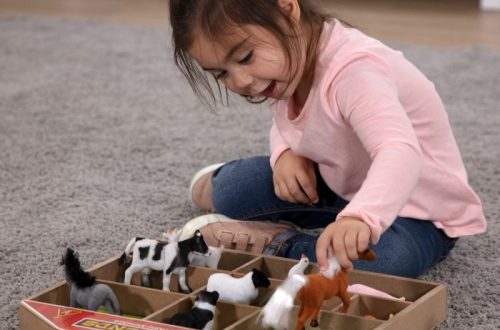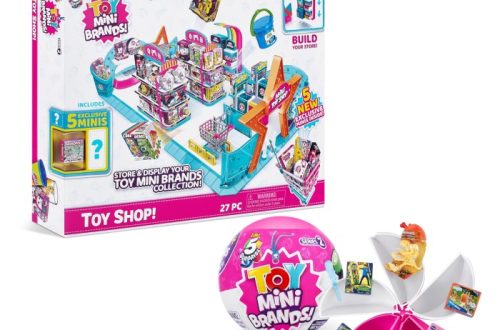Part 1: The Beauty of Wooden Toys
For centuries, children and adults have cherished wooden toys due to their timeless and classic appeal. Here are two points explaining the beauty of wooden toys:
1. Natural and Sustainable:
Wooden toys are crafted from natural, sustainably-sourced materials, setting them apart from their plastic counterparts. The use of eco-friendly materials not only reflects a commitment to environmental sustainability but also guarantees that wooden toys are free from potentially harmful chemicals and dyes commonly found in plastic toys. This focus on safety aligns with the stringent standards for child-friendly products, assuring parents that wooden toys are safe alternatives for their children. Moreover, the absence of synthetic additives and toxins in wooden toys promotes peace of mind, assuring parents that their children are engaging with toys that are free from potential health hazards.
Additionally, natural wood grains, textures, and hues imbue each wooden toy with a unique and authentic feel, further enhancing the sensory experience for children. This tactile quality not only fosters an appreciation for natural materials but also enriches the play experience, providing a tactile connection to the earth and its natural beauty. Consequently, wooden toys offer a harmonious blend of safety, sustainability, and sensory appeal, positioning them as a superior choice for conscientious parents seeking wholesome, eco-friendly playthings for their children.

2. Long-lasting:
Wooden toys are renowned for their exceptional durability and longevity, often lasting for generations when properly cared for. This exceptional resilience makes them much more than mere playthings; rather, they become timeless family heirlooms, treasured and passed down through the ages. As a result, wooden toys are not only a sustainable choice, reducing waste and contributing to a healthier planet, but they also evoke a profound sense of nostalgia, tradition, and emotional resonance. The act of passing down beloved wooden toys from one generation to the next imparts a sense of continuity and heritage, creating a beautiful legacy that is woven into the fabric of family tradition.
This generational handover not only fosters a deep bond between family members but also fosters an enduring connection to the past, as each toy carries with it the memories and stories of previous owners. Indeed, these well-loved toys become a tangible link to the past, immersing children in a sense of history and allowing them to forge lasting connections with their elders. This emotional and historical significance serves to elevate wooden toys beyond mere playthings, transforming them into cherished mementos that embody the timeless values of love, tradition, and enduring quality.
Part 2: The Art of Woodcraft
Crafting wooden toys is a skilled and intricate art form that requires precision and attention to detail. Here are two points explaining the art of woodcraft:
1. Handcrafted with Care:
Wooden toys often bear the mark of skilled artisans who showcase a profound sense of pride in their craft. With a deep commitment to their art, these craftsmen meticulously carve, shape, and sand each piece to perfection, ultimately crafting toys with a smooth, polished finish. Every step of the process is executed with precision and care, from the selection of premium wood to the intricate detailing and smoothing of edges.
This unparalleled attention to detail is a hallmark of handcrafted wooden toys, setting them apart from mass-produced plastic toys and infusing each piece with an irreplaceable personal touch. The artisan’s dedication to the craft is evident in the thoughtfully carved shapes, the seamless connections, and the flawless finishes, imbuing the toys with a warmth and authenticity that transcend mass-produced items. As a result, each wooden toy becomes a one-of-a-kind creation, resonating with a timeless allure and standing as a testament to the artistry, passion, and skill of the craftsmen behind its creation.

2. Unique Designs:
Wooden toys encompass an extensive array of shapes and designs, spanning from timeless classics like rocking horses and building blocks to intricate puzzles and pull-along toys. The versatility of wood as a medium for toy production transcends boundaries, offering a canvas for limitless creative expression. This characteristic inspires artisans to craft unique, innovative, and captivating designs that captivate the imagination of both children and adults.
Each wooden toy embodies the artisan’s dedication to infusing originality and artistic flair, resulting in playthings that are not only functional but also aesthetically mesmerizing. The rich diversity in shapes, sizes, and themes showcased in wooden toys serves to cater to a broad spectrum of interests and developmental needs, ensuring that there is a perfect wooden toy for every child. Furthermore, the enduring appeal of wooden toys lies in their capacity to transcend generations, evoking nostalgia and timeless charm. This showcases the resounding impact of wooden toys as more than mere playthings, but as enduring symbols of creativity, innovation, and artistry.
Part 3: Educational Benefits of Wooden Toys
In addition to their aesthetic appeal, wooden toys also offer a range of educational benefits for children. Here are two points explaining the educational benefits of wooden toys:
1. Enhances Creativity:
Wooden toys are instrumental in fostering open-ended and imaginative play, granting children the latitude to embark on creative journeys, conjure their own narratives, and construct imaginative scenarios. This unbridled creative freedom forms a crucible for the development of critical cognitive and emotional skills essential for holistic growth. Through interacting with wooden toys, children are urged to innovate and problem-solve, thus honing their critical thinking abilities as they navigate and manipulate the toys in line with their imaginative storyline.
Such uninhibited play nurtures independence, autonomy, and adaptability, equipping children with the mettle to confront challenges, resolve quandaries, and craft solutions. Moreover, this imaginative exploration cultivates emotional intelligence, enabling children to empathize, comprehend and express themselves as they creatively engage with the wooden toys. This amalgamation of imaginative liberty and creative expression undergirds the cognitive and emotional growth of children, fortifying their proficiency in navigating complex situations while nurturing a rich inner world of creativity and innovation.

2. Sensory Stimulation:
Many wooden toys have tactile elements that engage a child’s senses, such as smooth surfaces, natural textures, and subtle woodgrain patterns. This sensory stimulation helps toddlers and young children develop fine motor skills and hand-eye coordination, laying the foundation for future learning and cognitive development.
Part 4: Sustainability and Environmental Impact
With growing concerns about plastic pollution and environmental sustainability, there has been a renewed interest in wooden toys as a more eco-friendly alternative. Here are two points explaining the sustainability and environmental impact of wooden toys:
1. Biodegradable and Renewable:
The use of wood as the primary material for crafting toys underscores their sustainability and eco-friendliness. Unlike plastic toys, which are derived from non-renewable resources and contribute to the mounting issue of landfill waste, wooden toys are manufactured from a renewable resource – trees. This inherent characteristic imbues wooden toys with environmental virtue, aligning them as an eco-conscious choice. Furthermore, wooden toys are biodegradable, meaning that at the end of their life cycle, they will naturally decompose without leaving enduring ecological footprints. Moreover, their recyclability and potential for repurposing provide additional sustainable benefits, allowing for the creation of new items or facilitating their seamless integration back into the natural environment. These attributes make wooden toys an attractive option for environmentally conscious parents who prioritize sustainable consumer choices. By opting for wooden toys, they actively participate in reducing their ecological footprint and upholding a commitment to safeguarding the environment for future generations.
2. Carbon Footprint:
The production of wooden toys typically has a lower carbon footprint compared to plastic toys, as they require less energy and resources to manufacture. Furthermore, many wooden toy makers prioritize sustainable forestry practices, ensuring that the wood used in their products comes from responsibly managed forests, further reducing their environmental impact.
In conclusion, mastering the art of crafting timeless wooden toys offers a range of benefits, from their natural beauty and durability to their educational value and positive environmental impact. By choosing wooden toys, parents can provide their children with safe, sustainable, and enriching play experiences that will stand the test of time.




